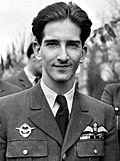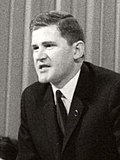Kingdom of Yugoslavia
| King of Yugoslavia | |
|---|---|
| Краљ Југославије Kralj Jugoslavije | |
 | |
 | |
| Details | |
| Style | His Majesty |
| First monarch | Peter I |
| Last monarch | Peter II |
| Formation | 1 December 1918 |
| Abolition | 29 November 1945 |
| Residence | Dedinje Royal Compound, Belgrade |
| Appointer | Hereditary |
| Pretender | Line of succession |
The Kingdom of Serbs, Croats and Slovenes was created by the unification of the Kingdom of Serbia (the Kingdom of Montenegro had united with Serbia five days previously, while the regions of Kosovo, Vojvodina and Vardar Macedonia were parts of Serbia prior to the unification) and the provisional State of Slovenes, Croats and Serbs (itself formed from territories of the former Austria-Hungary) on 1 December 1918.
Until 6 January 1929, the Kingdom of Serbs, Croats and Slovenes was a parliamentary monarchy. On that day, King Alexander abolished the Vidovdan Constitution (adopted in 1921), prorogued the National Assembly and introduced a personal dictatorship (so-called 6 January Dictatorship). [3] He officially renamed the country Kingdom of Yugoslavia on 3 October 1929 and, although granted the 1931 Constitution, continued to rule as a de facto absolute monarch until his assassination on 9 October 1934, during a state visit to France. After his assassination, parliamentary monarchy was put back in place.
The Kingdom of Yugoslavia was defeated and occupied on 17 April 1941 after the German invasion. The monarchy was formally abolished and the republic proclaimed on 29 November 1945.
All monarchs were members of the Karađorđević dynasty. Peter I, previously King of Serbia (since the May Coup in 1903 against the Obrenović dynasty), was proclaimed King by representatives of South Slav states. The royal family continued through his son (Alexander) and his grandson (Peter II).
List
| Name Reign | Portrait | Birth | Marriages | Death | Succession right | Note |
|---|---|---|---|---|---|---|
| Peter I Петар I 1 December 1918 – 16 August 1921 (2 years, 259 days) |  | 29 June 1844 Belgrade Son of Alexander Karađorđević, Prince of Serbia and Persida Nenadović | Princess Zorka of Montenegro 30 July 1883 5 children | 16 August 1921 Belgrade aged 77 | Previously King of Serbia (June 15, 1903 – December 1, 1918), proclaimed King by representatives of South Slav states | Held the title "King of Serbs, Croats and Slovenes". Prince Alexander served as regent in his final years. |
| Alexander Александар 16 August 1921 – 9 October 1934 (13 years, 55 days) |  | 16 December 1888 Cetinje Son of Peter I and Princess Zorka of Montenegro | Maria of Yugoslavia 8 June 1922 3 children | 9 October 1934 Marseille aged 45 | Son of the preceding | Changed title to "King of Yugoslavia" in 1929. Assassinated in Marseille. |
| Paul Павле 9 October 1934 – 27 March 1941 (6 years, 170 days) |  | 27 April 1893 Saint Petersburg Son of Prince Arsen of Yugoslavia and Aurora Pavlovna Demidova | Olga of Greece and Denmark 22 October 1923 3 children | 14 September 1976 Paris aged 83 | Cousin of the preceding | Served as regent for Peter II, together with Radenko Stanković and Ivo Perović. |
| Peter II Петар II 9 October 1934 – 29 November 1945 (11 years, 52 days) |  | 6 September 1923 Belgrade Son of Alexander and Maria of Yugoslavia | Alexandra of Greece and Denmark 20 March 1944 1 child | 3 November 1970 Denver aged 47 | Son of the preceding | Reigned under the regency until the coup d'état on 27 March 1941; exiled on 17 April 1941 and deposed on 29 November 1945. |




















